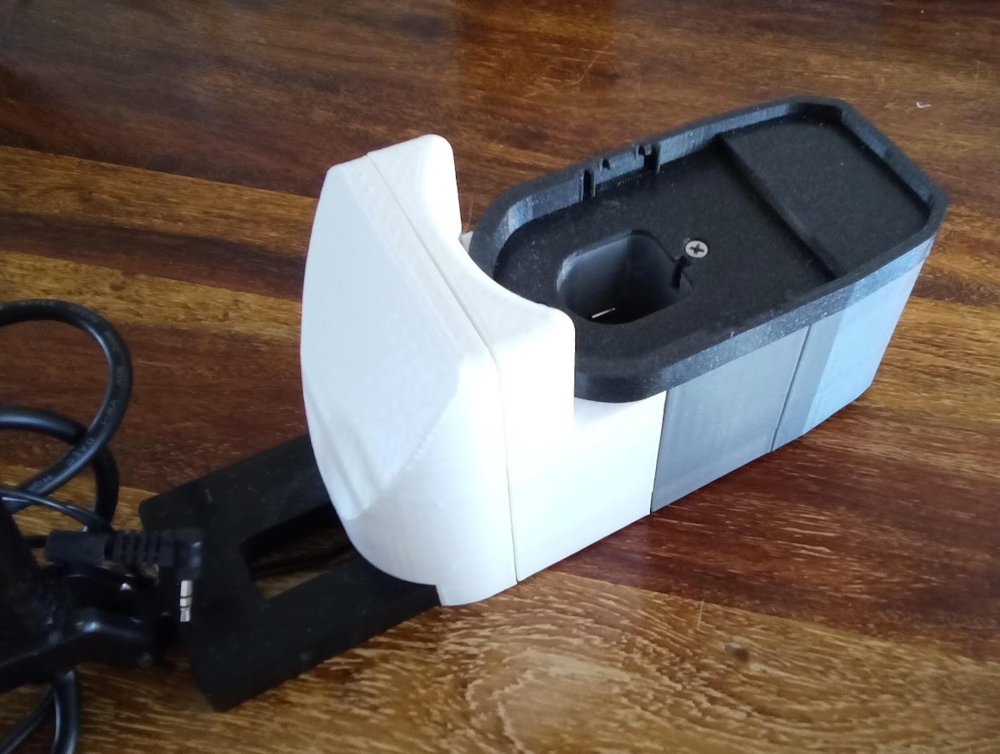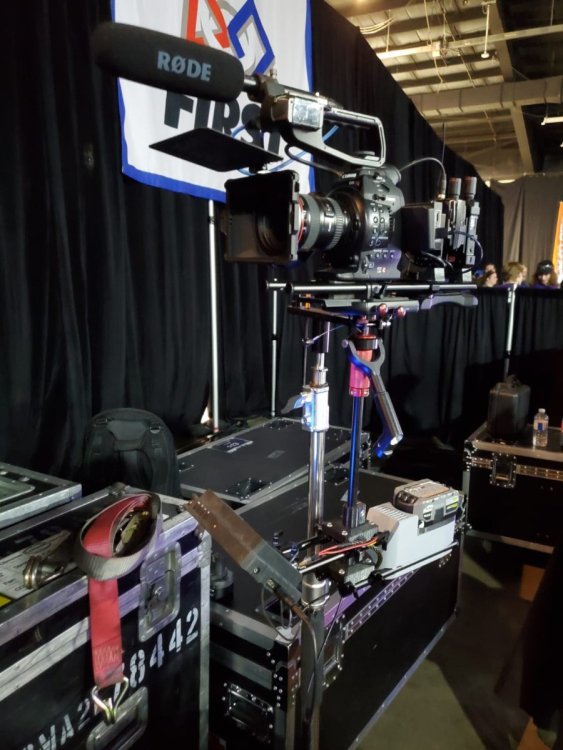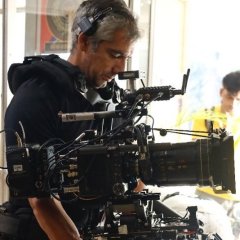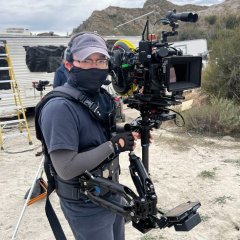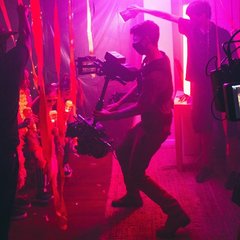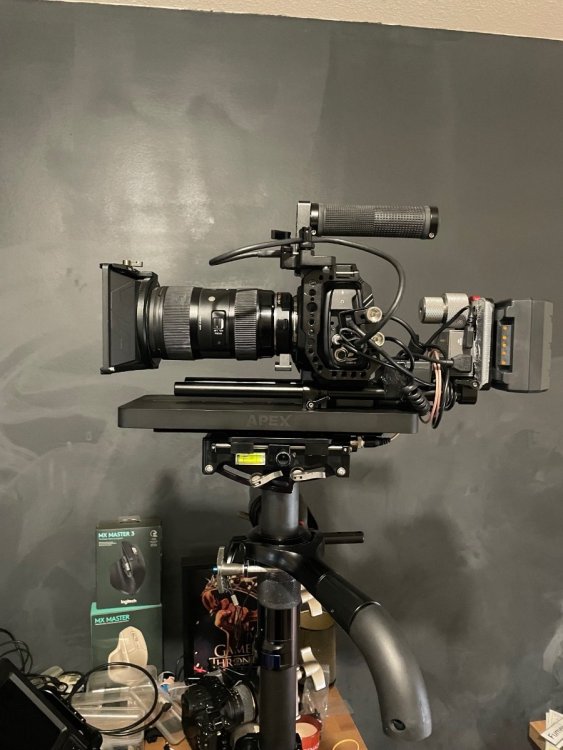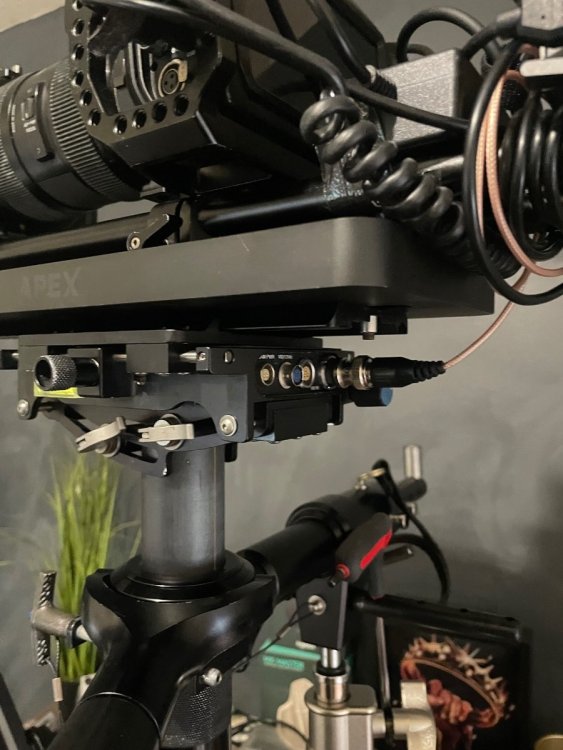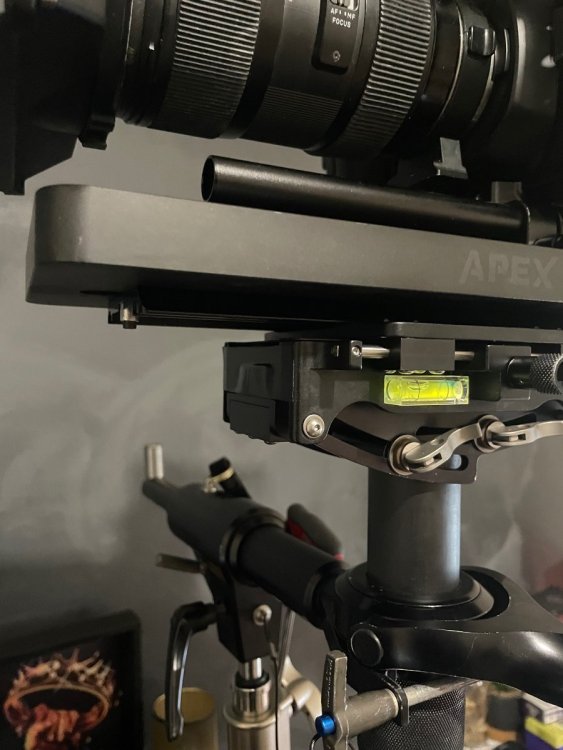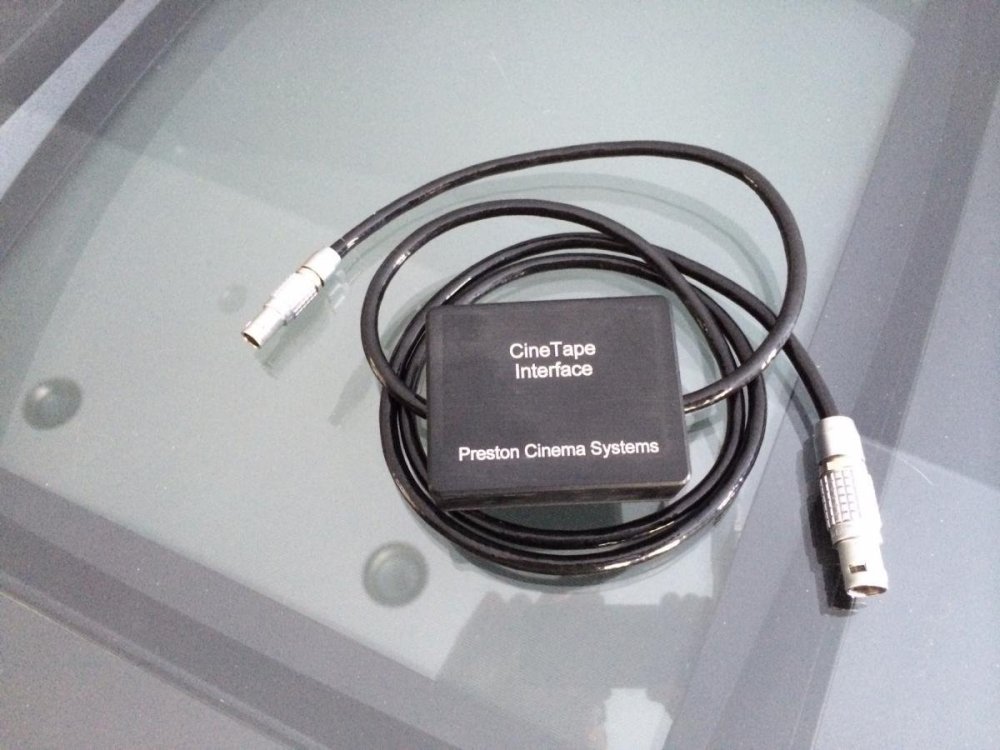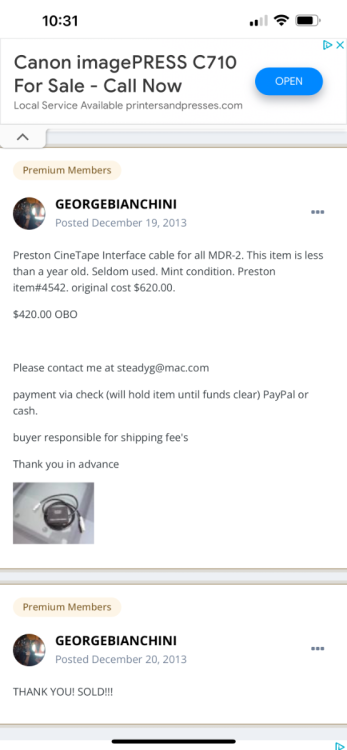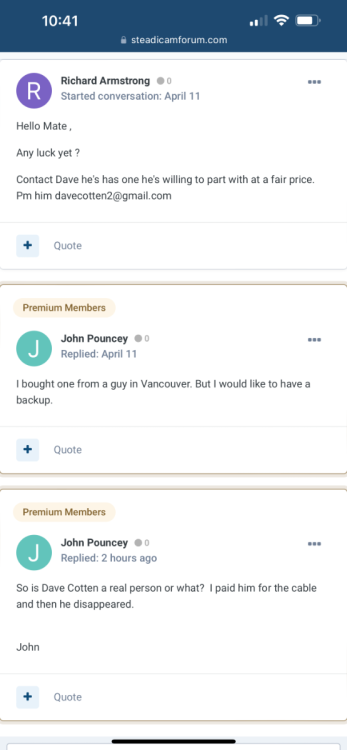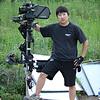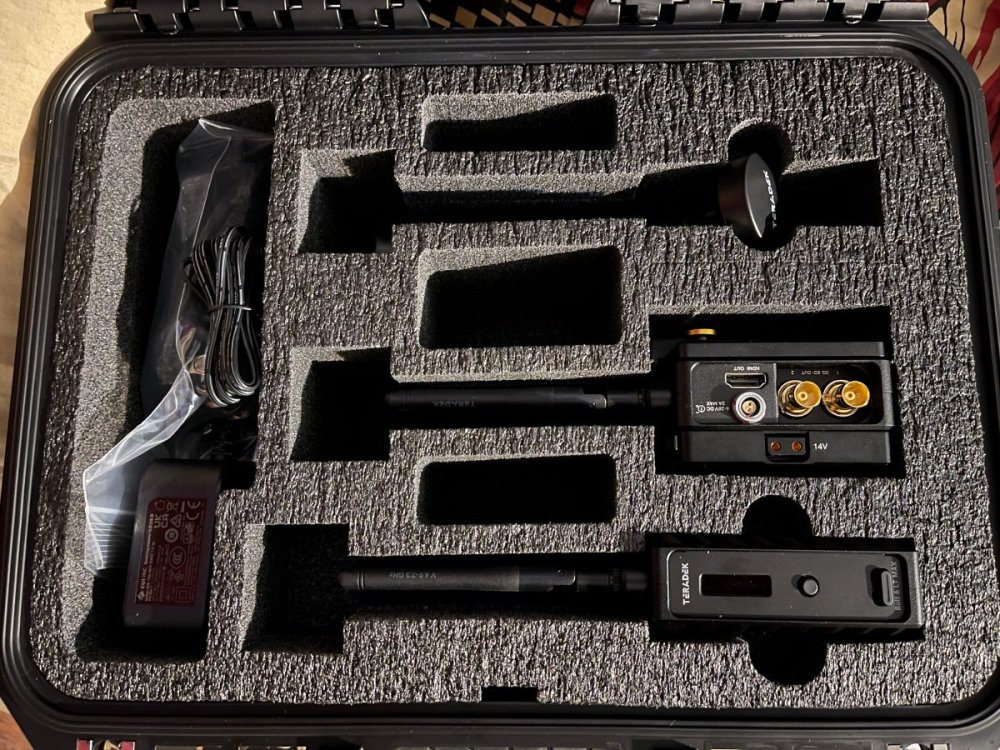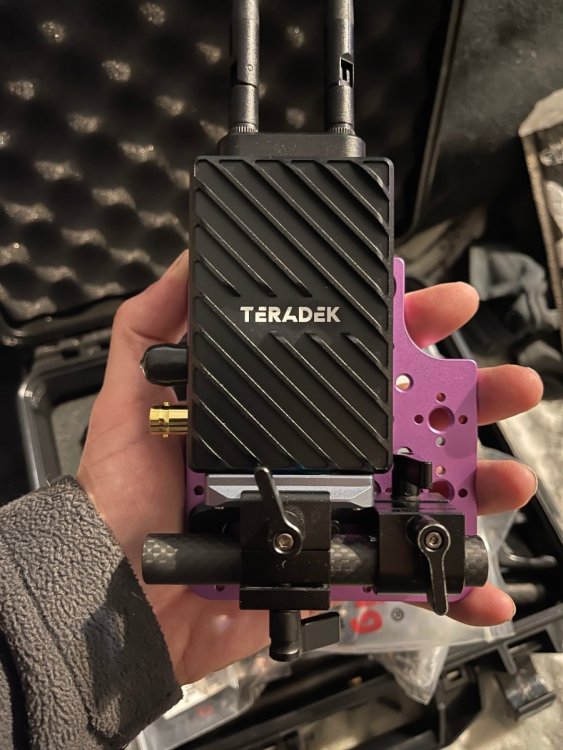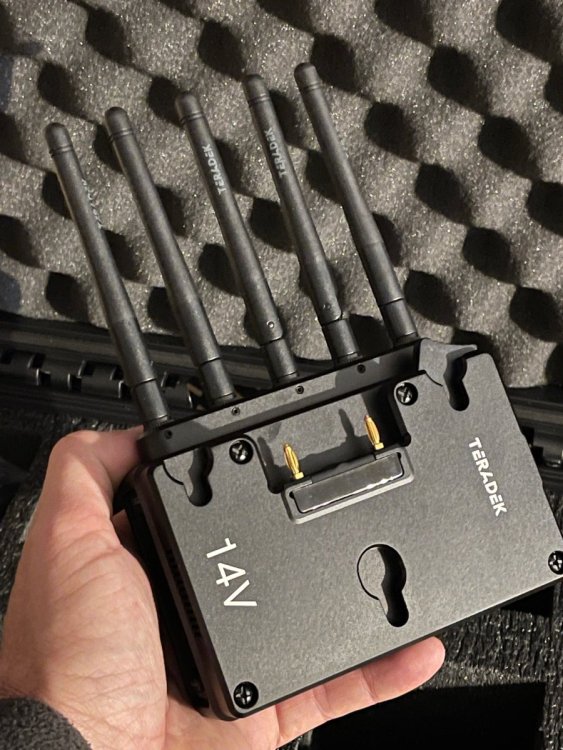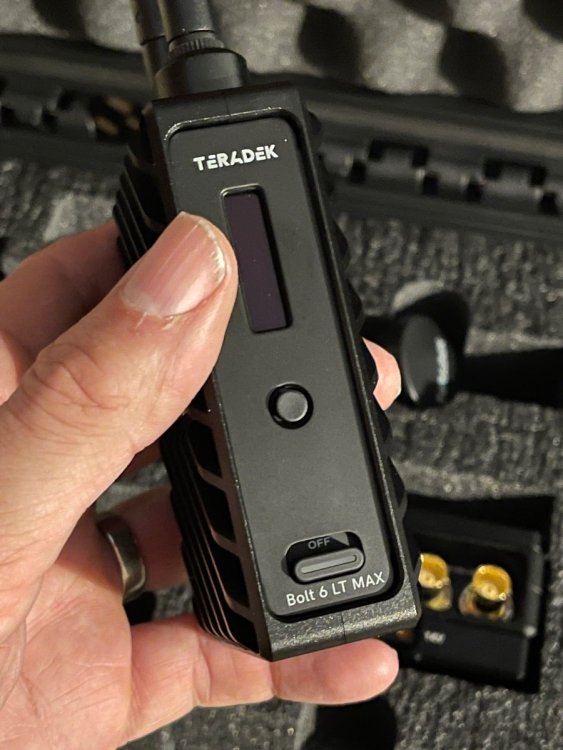All Activity
- Today
-
Infrequent Flyer - Rebuild of a Steadicam Flyer
Calum Tsang replied to Calum Tsang's topic in Steadi-Newbies
Battery System 2023 Attempt I wanted to power the entire rig from one power source and I wanted this source to be cheap and plentiful if I needed to buy more batteries. After looking up replacement NP1 batteries, it was clear I needed to replace the original battery setup completely. In the years since NP1 chocolate bars were popular for Betacams and the like, I had assumed someone had made a cheap NP1 Lithium Ion replacement, but they are actually fairly expensive. One option was Sony F-type or Canon LP-E6 style batteries, while cheap and plentiful, were small in capacity. I had also considered going to V Mount or Anton Bauer, which had many cheap brackets/cables available in the aftermarket, but a quick back of the envelope calculation showed these cine/broadcast specific batteries were almost double the price. If you look at price per watt hour, there is nothing cheaper than using power tool batteries. I settled on using Ryobi 18V power tool batteries. One reason is I already had a 4Ah from a weedwhacker and these are easily found at any Home Depot, but another reason is that they have integral voltage cutout circuitry, which is critical for managing Lithium Ion cells. If you let them run too low, they can't be recovered. In DeWalt and other systems, that circuitry is in every tool, in Ryobi, it's in every battery. If you put a load on a DeWalt battery, it will eventually run below a safe voltage and the battery will never be able to be recharged. I'd also need to adapt the physical shape of the Ryobi battery to the lower "paddle" of the Flyer as well as convert the raw 18V DC output to some constant voltage around the rig. To adapt the physical shape of the Ryobi battery, I found an STL model on Thingiverse that someone had already modelled quite accurately: https://www.thingiverse.com/thing:4129039/files This is a two piece model which has the Ryobi "stalk", a leftover from the original sub-AA NiCAD cell design of early 18V batteries, and an interface plate which has indents for the spring loaded clips on the battery itself. To convert the voltage, I found a multitude of DC to DC converter boards on Amazon: https://www.amazon.ca/s?k=lm2596+dc-dc+buck+voltage+converters Many are based around the TI LM2596 integrated circuit, which is basically a single chip DC to DC converter with a bit of support circuitry around them. The input voltage range is 4.5 to 40V DC and you set the output voltage using a trimpot. The only problem with this setup is a current limit of 3A. This would be a problem later, but given their inexpensive price, I figured I'd go with this to start. https://www.ti.com/product/LM2596#params From there, I designed a shroud which would capture the metal "paddle" of the Flyer on one end, the Ryobi plate on the other, and have enough space for the voltage conversion inside. I did this in Autodesk Fusion360 and it was easy to mockup the Steadicam original parts, the Ryobi battery, the already designed Thingiverse plate, all together, then export for 3D printing. I had to print the first attempt in multiple pieces, using Lego Technic pins as alignment dowels, but amazingly, this initial draft worked perfectly. The batteries snapped in solidly and out came "clean" 8.4V DC power. -
It's been almost two years since I started on a project to repair and learn how to operate a Steadicam, and I thought I'd write down some of the modifications and changes in case anyone is interested in such a thing, everything from washing the vest to prototyping new parts for it. I've been following the Steadicam for a while: In 1997, at SMPTE'97 in Sydney, I saw a Steadicam (ProVid) being demonstrated and I played around with it a bit--it was such an intriguing invention. Over the years I've kept track of prices of low end Steadicam Pilot kits but I have no professional need of such a thing: I just found them interesting. In June 2022, I noticed a local classified ad offering a "Steadicam Pilot" which had an arm significantly different than the Pilots I'd seen offered before. It was put up for sale for $400, which as far as I can tell, was about half the going rate for a Pilot here in Toronto. I visited the seller, who pulled out the giant nylon bag and showed me its contents. As I guessed, it was actually a Flyer. It turns out he'd had it for his business several years ago but never got much use out of it; subsequent potential buyers would come and look at it, and one even bought it and took it away, quickly returning when they realized the system was not a plug and play gimbal you could whip out quickly when you saw the mother of the bride hamming it up on the dance floor with Uncle Ed. The seller warned me, this was not a turnkey system. But I knew what I was buying into: I was purchasing a two year science project. I wanted to figure out how to restore it and operate it, purely for fun. The Original System So $400 later, I came home with the following: Flyer "grey arm" with two "bones". Flyer vest, complete minus one oval plate Flyer/Mini original post/sled, narrow diameter with red trim knobs and Sony NP1 NiCAD battery boxes Flyer/Mini dovetail plate Flyer docking plate A generic NTSC SD analog LCD monitor The giant black nylon bag The bag included a random assortment of objects like a text-adventure video game: One flat 10 pound dumb bell weight, a 14.4V NiMH Anton Bauer battery pack with the property tag of a local rental house, and a pair of brass door hinges, taped together with black electrical tape. It also included a photocopied excerpt of the Steadicam Operators Handbook and various printouts of Internet websites from a decade ago. What it did not include was the collapsible C stand apparently it came with from the factory. My goals would be to: Fly a Canon C100 with wireless transmission system for live events Replace the SD monitor with a cheap HD monitor of some sort Replace the battery system with some sort of unified power source for everything on the rig.= Washing the Vest and the Padded Case I thought the first task was to wash the vest, given these items are worn and probably sweated into extensively. There is very little information about how to wash a Steadicam vest, with most posts suggesting you spray the thing with disinfectant or leave it out in the sun. You can in fact wash it, but you do have to carefully disassemble everything. The hard items like the metal frame that comes across your chest and plastic buckles can be detached and wiped with a Lysol wipe or similar disinfectant spray. The soft vest pieces are made of foam padding blocks encased in a nylon cover. You can unwrap those padding pieces and wash them by hand in soap andwater, leaving them to dry. Any metal elements attached to the soft vest can be unscrewed and removed--in the case of the Flyer vest, the front brace has a set of bolts which go through the fabric--then the entire nylon assembly can be washed separately. To wash those nylon fabric parts, I used Lysol Laundry Additive, which kills bacteria and germs without damaging fabric colour, and soaked the nylon pieces for a few hours in a tub of warm water. Periodically, I would squeeze them to get more liquid through the nylon fabric. Then, I wrung them out in clean water and let the air dry after patting them down with towels. The nylon bag I got had been left in storage out in a shed. This bag also comes apart, with foam padding and durable plastic insert panels in each wall. If you look carefully inside the case once the foam blocks that hold the Steadicam are removed, you'll see internal zippers and folds where the padding and inserts can be accessed. Once they're out, the whole nylon case can be put into a washing machine. To rebuild the bag, it's easiest to roll the plastic inserts into a cylinder, then insert them into the inner folds of the bag and slowly unroll them into shape.
-
Check out Justin Browne’s Bingo Plate, you can mount rods to it in a configuration that you can mount a low mode monitor to it.
-
Preston FIZ For Sale
Gareth Manwaring replied to Gareth Manwaring's topic in Steadicam Marketplace - For Sale
Sold. Thanks. - Yesterday
-
Pro Atlas arm 2 gray + 2 black canister
Alberto Garcia replied to Alberto Garcia's topic in Steadicam Marketplace - For Sale
SOLD -
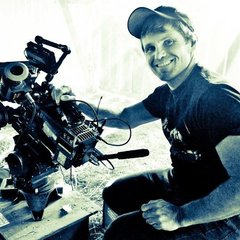
DJI Ronin 2 - new
Bruce Borland replied to Bruce Borland's topic in Steadicam Marketplace - For Sale
New price $6600.00 -

TIFFEN LX VEST
Gedeons Muravskis replied to Gedeons Muravskis's topic in Steadicam Marketplace - For Sale
Up - Last week
-
Hello, I just bought my first steadicam clipper 2 and I would like to install a low mode monitor. Except that I can't put a rod like on the rigs I see on the forum. Here are the photos. If you have ideas and suggestions I am interested.
-

READ THIS FIRST - Be Very Careful of Scams
Tim Tyler replied to Tim Tyler's topic in Steadicam Marketplace - For Sale
Sorry to hear that, John. I've just banned the Richard Armstrong account. -
READ THIS FIRST - Be Very Careful of Scams
John Pouncey replied to Tim Tyler's topic in Steadicam Marketplace - For Sale
I have a post in the Marketplace looking to buy a Cinetape/Preston Interface cable. A guy named Richard Armstrong messaged me and told me another guy named Dave Cotten had one for sale. I guess I’m an idiot. I paid the guy $75 via PayPal and then crickets. Turns out I found the image he sent me of the cable in an 11 year old post on Steadicam Marketplace. -
Teradek Bolt 6 LT Max Transmitter/Receiver system. This is the LT version with Max range and Anton Bauer plates on the receiver in excellent condition. New from Teradek, it sells for $13,290. Selling this one for $10,000 US with extras like Kondor Blue Nato Rail transmitter and receiver mounts/baby pin mounts and more. Used on one show. Serious only please. Grayson Grant Austin, SOC
-
I’ve had a lot of inquiries but so far, no one has truly had their funds in order. Serious only please. A fantastic remote head. Accurate, repeatable motion control, Back pan/Stabilization upgrade, new brushless high payload (75 pounds) motors with new high payload bearings, all new electronics and wiring in the head as well as completely new electronics and wiring in the Wheels as well as a new style set of wheels and lots of extras. Excellent for car work as the stabilization can be turned on and off for each axis. This head makes a lot of rental and is a fantastic run of show remote head. Pays for itself in one show. Ask about a stabilized roll axis for this head. Price reduced for an easy sale: Now selling for $28,000 US. Grayson Grant Austin, SOC
-
3a Gold Spring arm
Steve Minnick replied to Steve Minnick's topic in Steadicam Marketplace - For Sale
t -

3a Gold Spring arm
Blaine Dunkley replied to Steve Minnick's topic in Steadicam Marketplace - For Sale
Hey Steve! Sent you an email separately, but thought I'd follow up here as well. I'm very interested in the Luna arm. Would love to chat. I'm NYC based and can scoop it easily. Thanks! -
Just Paid! Thanks
-
Steadicam Zephyr brand new 7000$
Peter Olow Hofmann replied to Peter Olow Hofmann's topic in Steadicam Marketplace - For Sale
DUMP : Reduced price 5000 € or 6000 $ For all also including shipping in Europe -
Arri Trinity 1 w/ NODO Wheels
Nicholas Langley replied to Nicholas Langley's topic in Steadicam Marketplace - For Sale
Price drop $38,000

